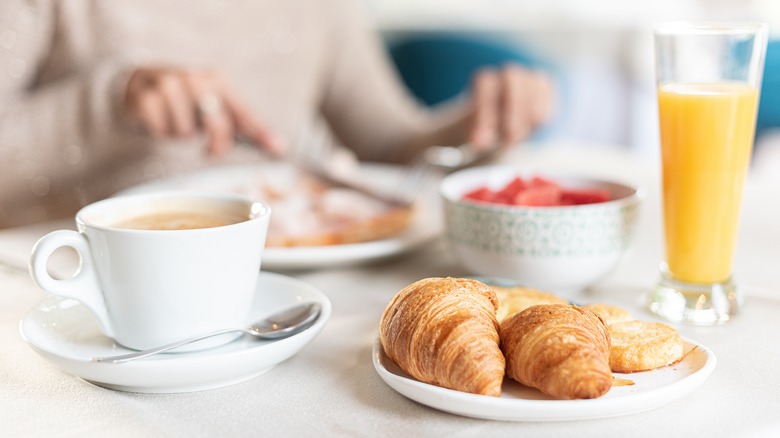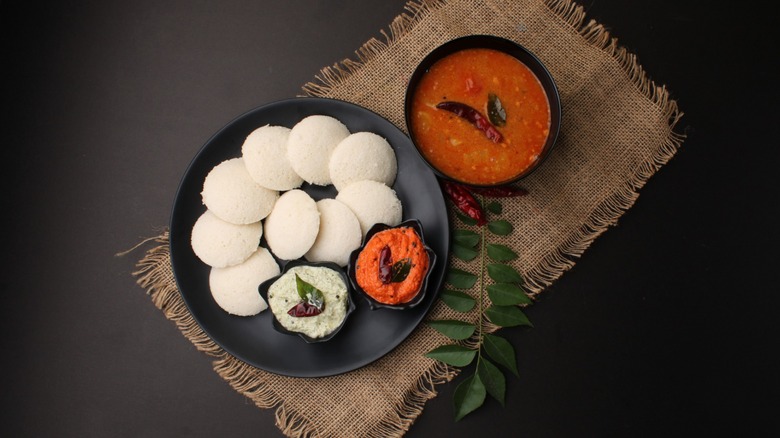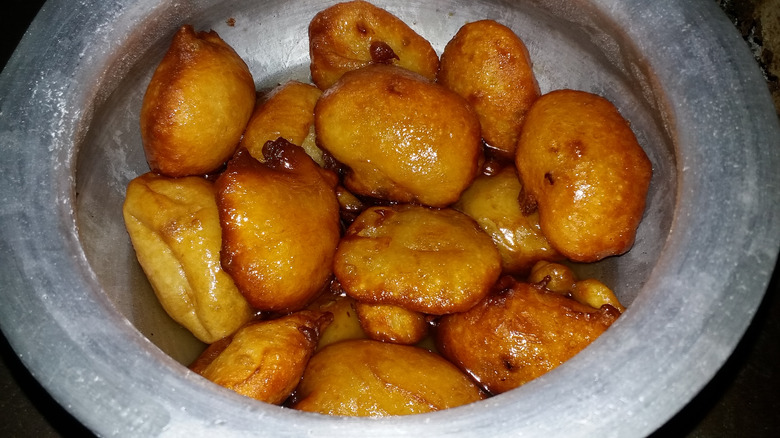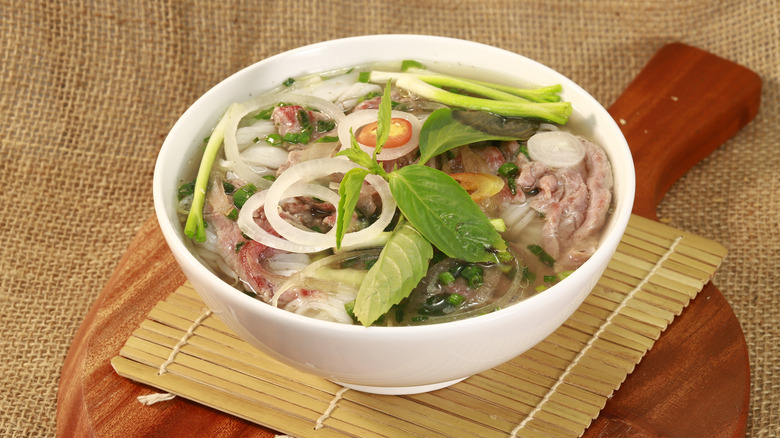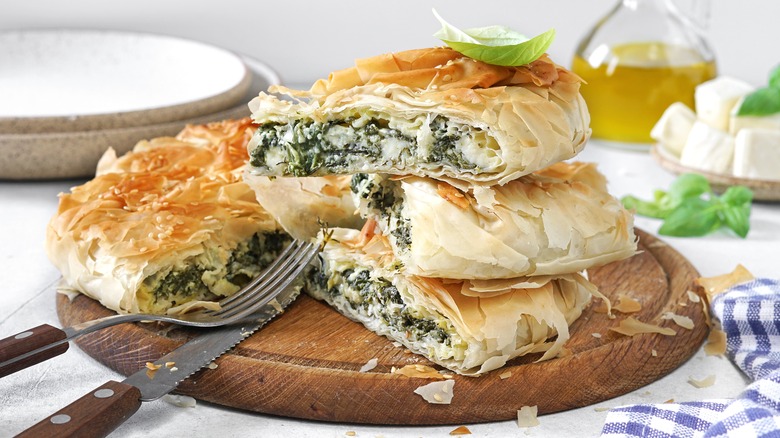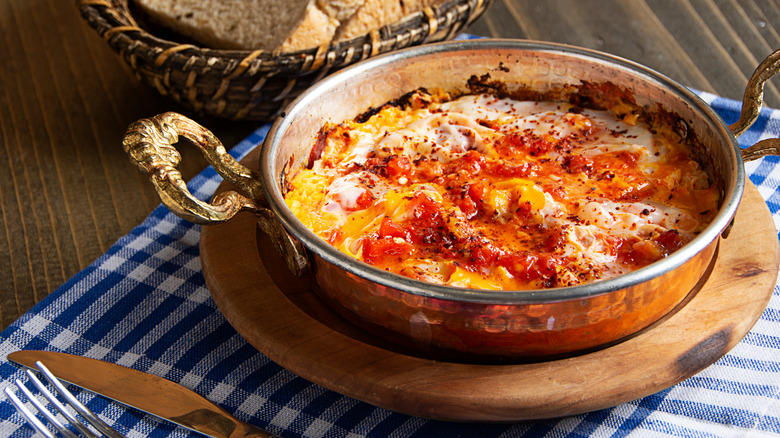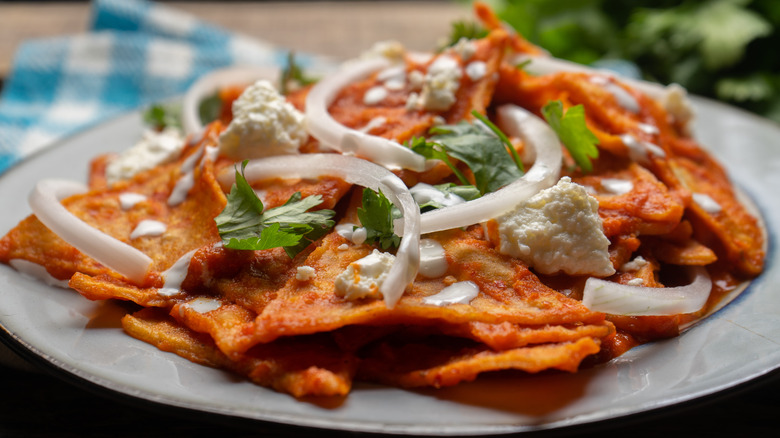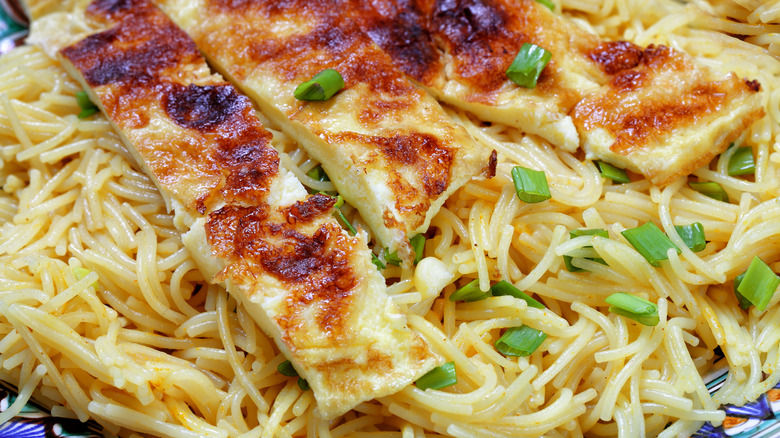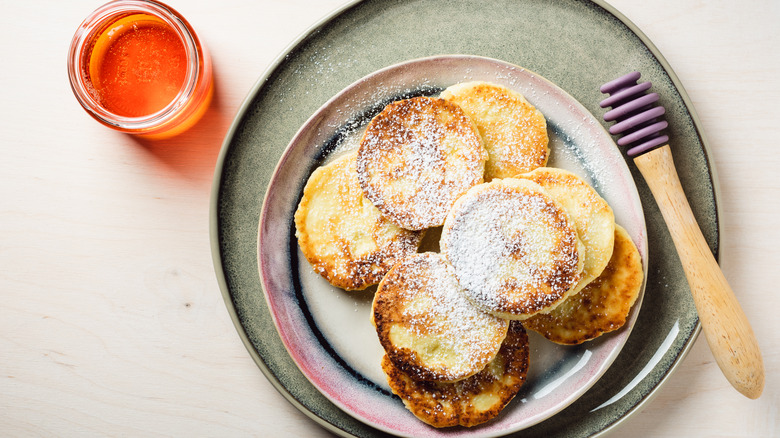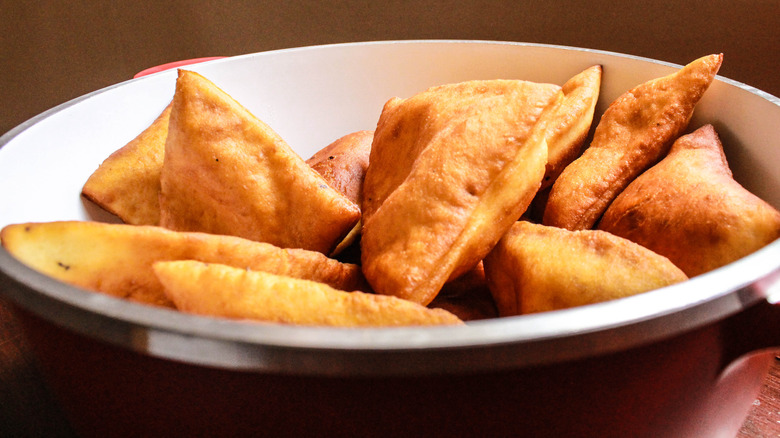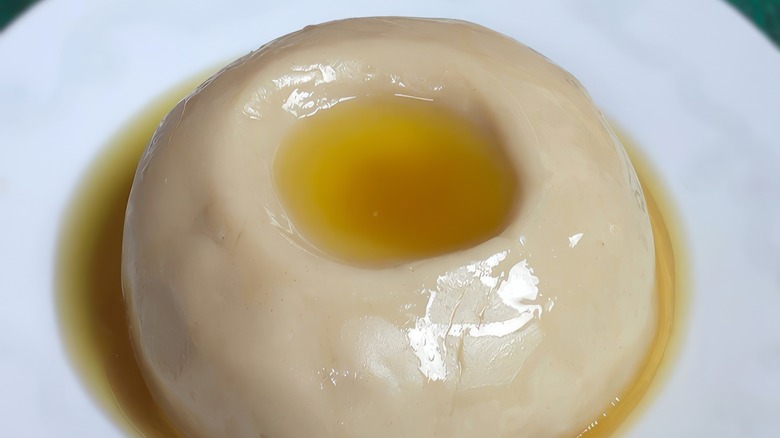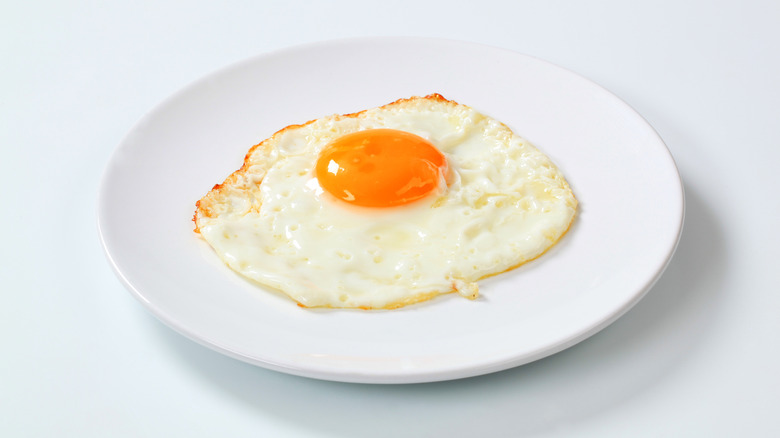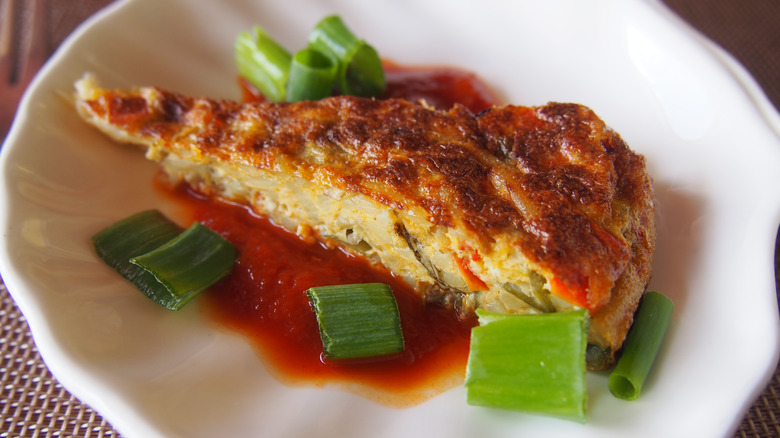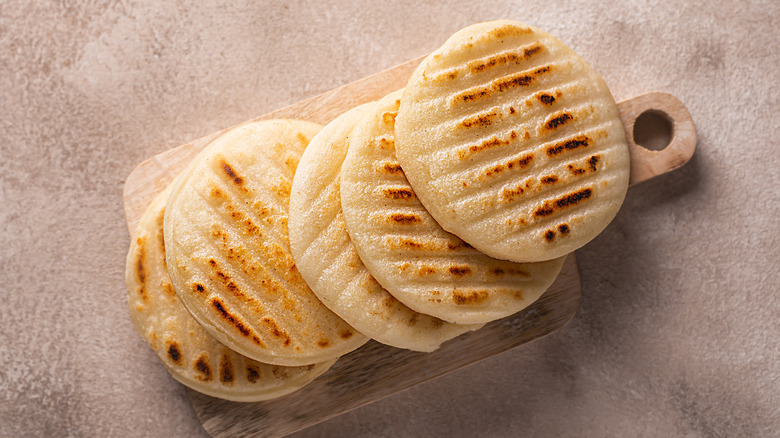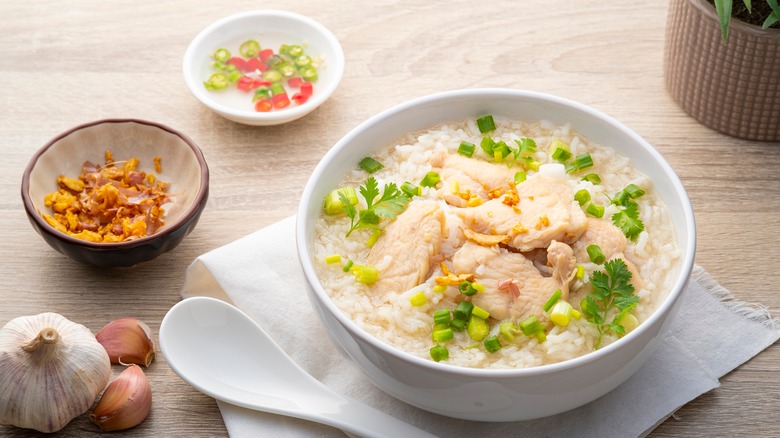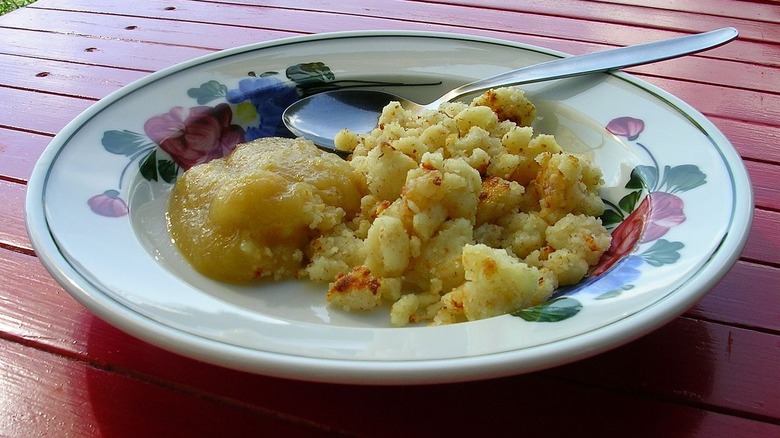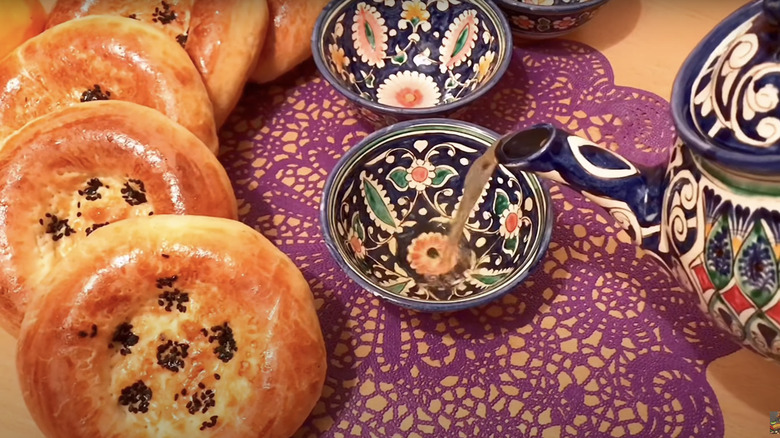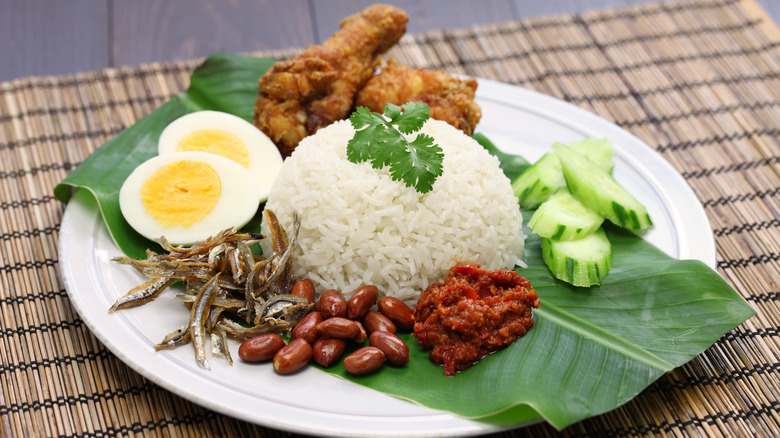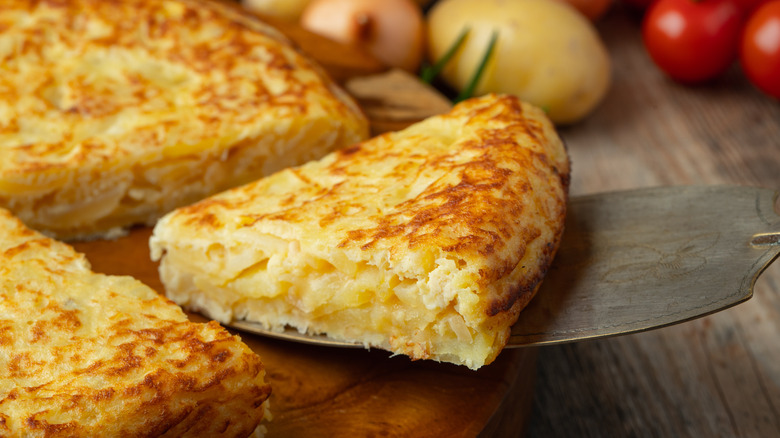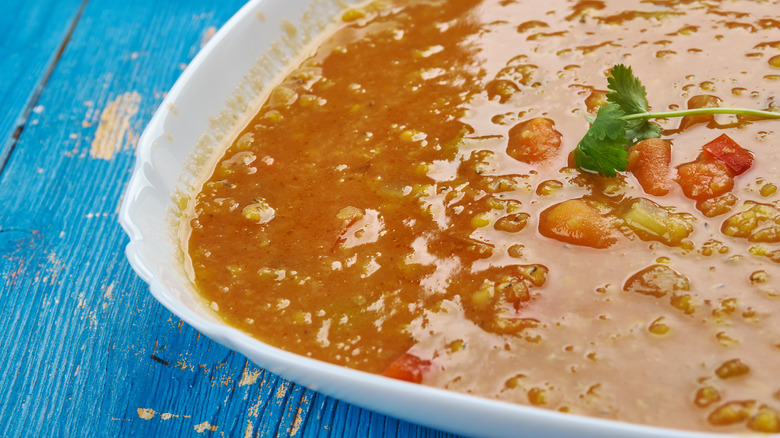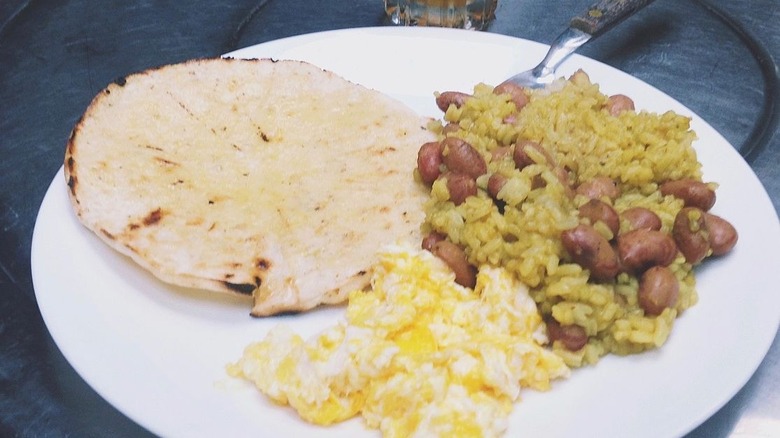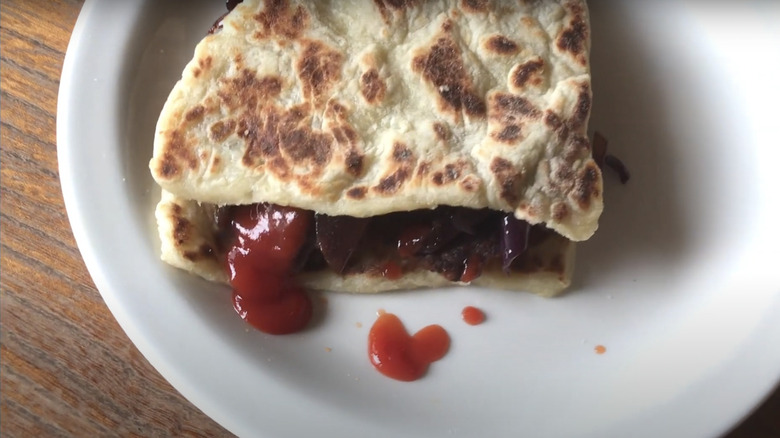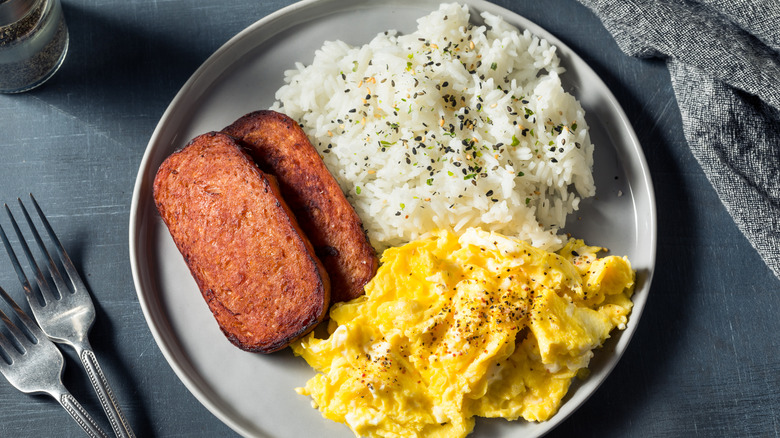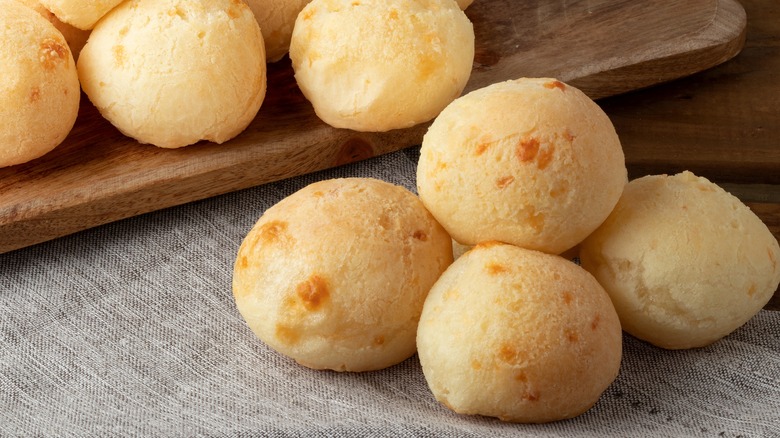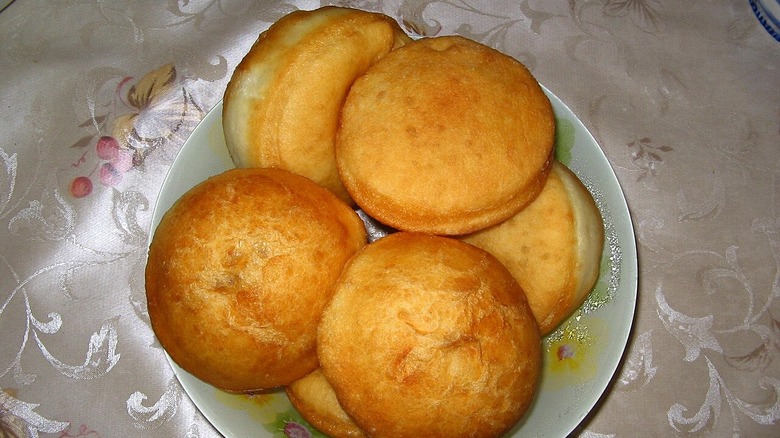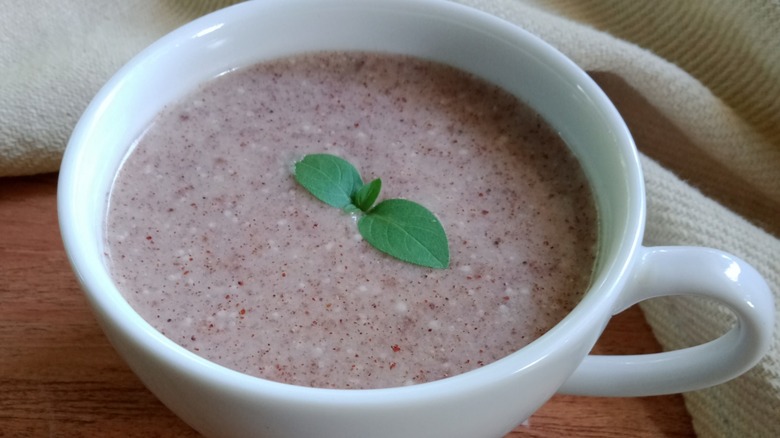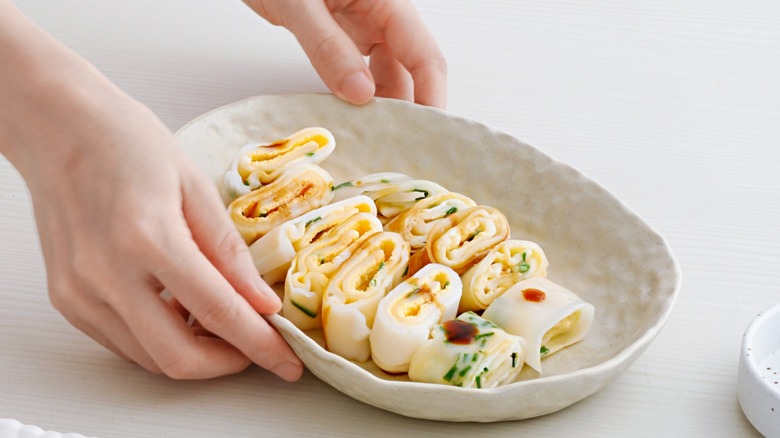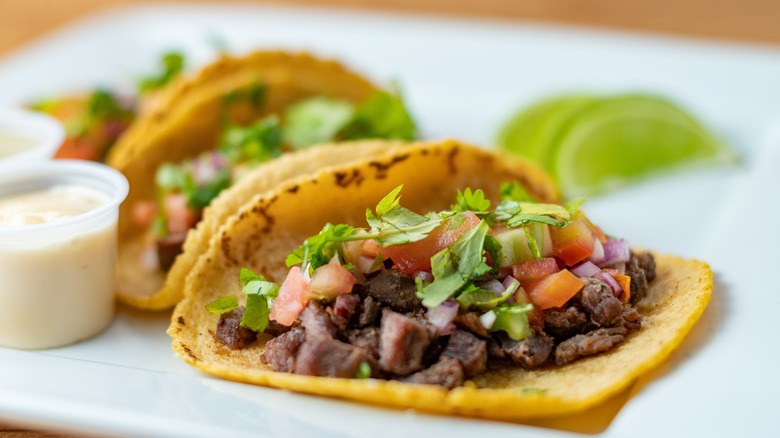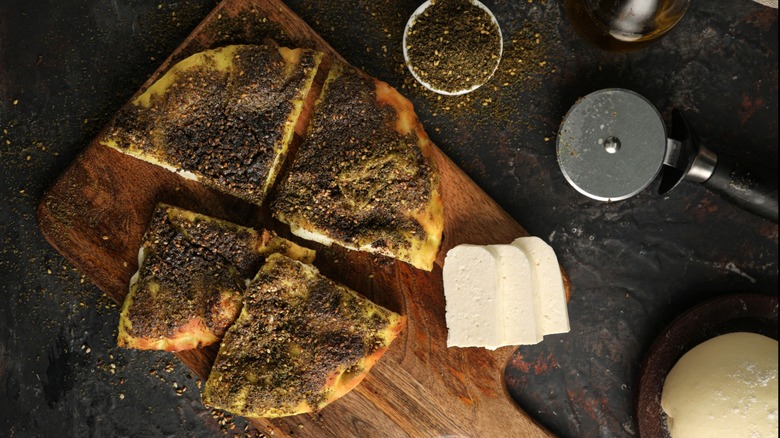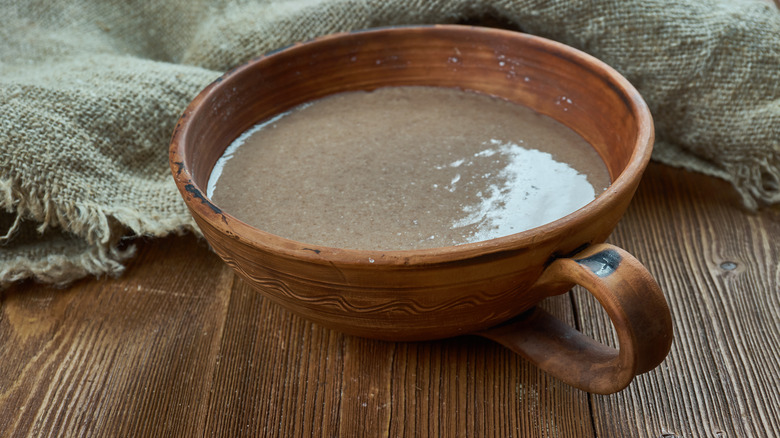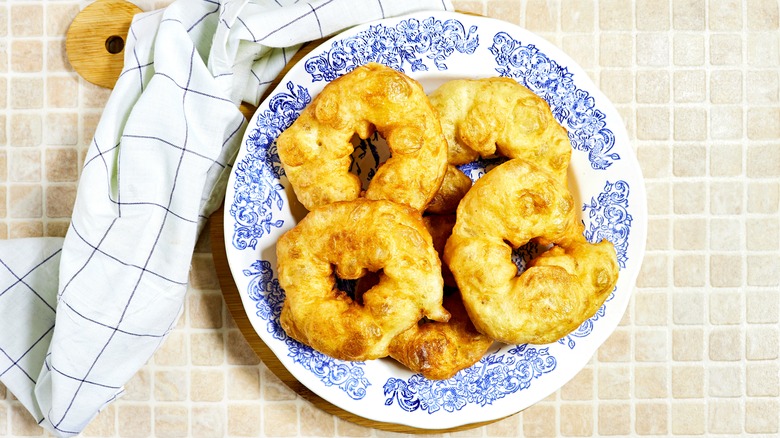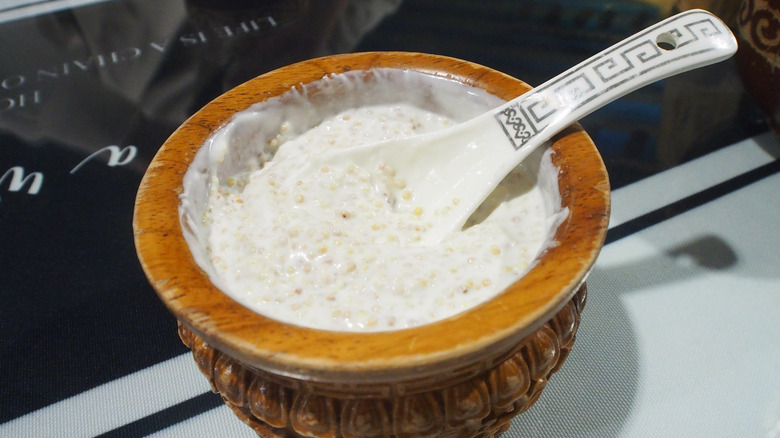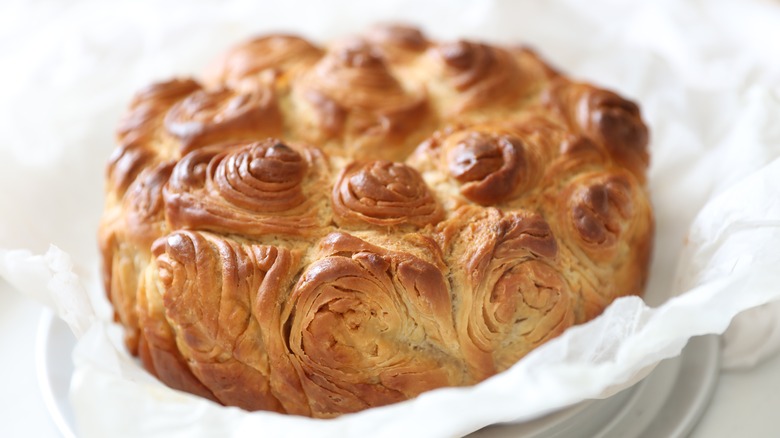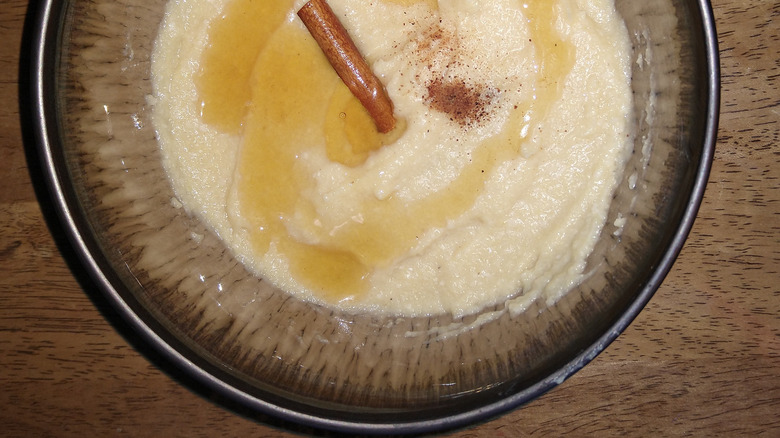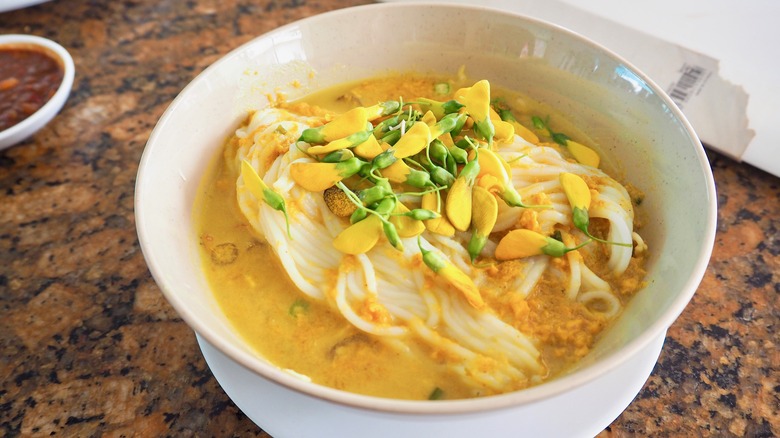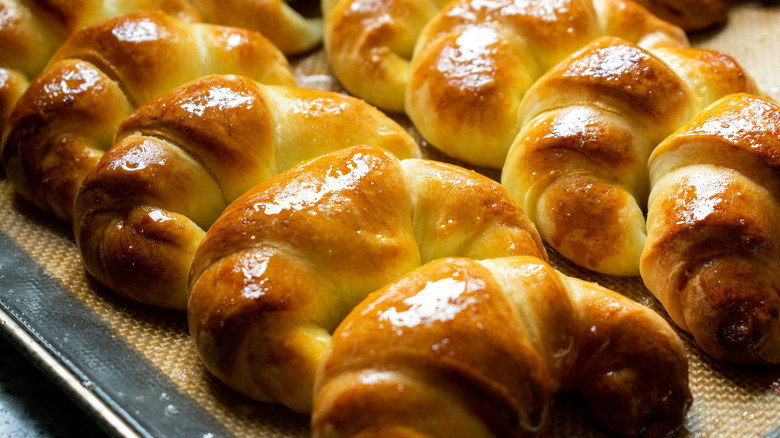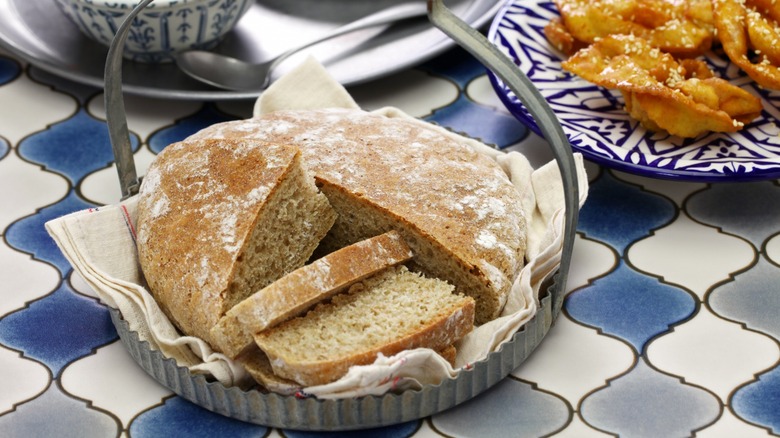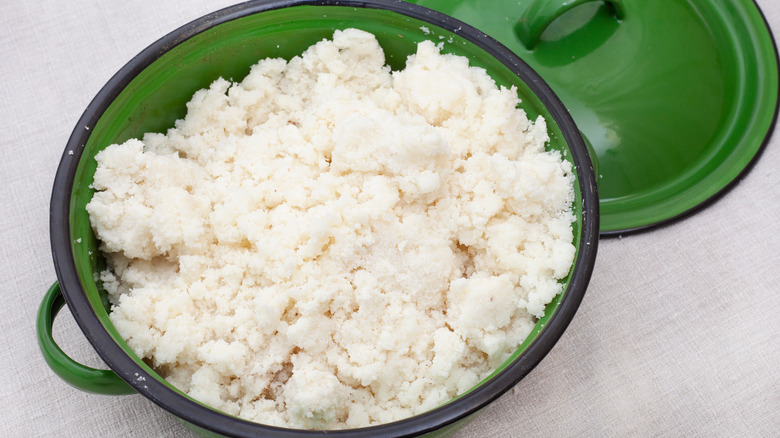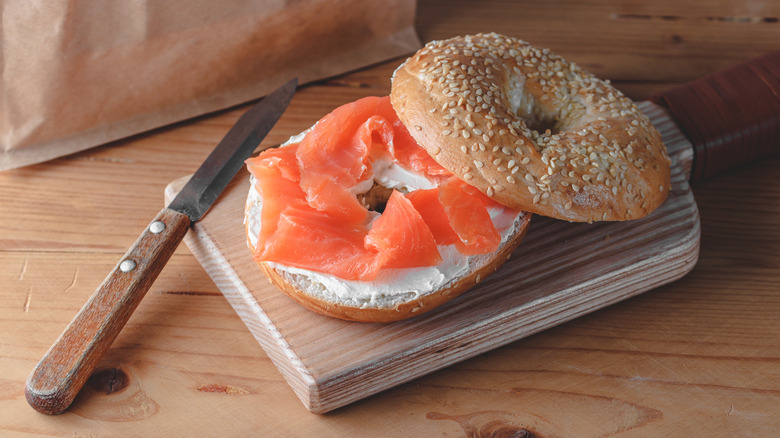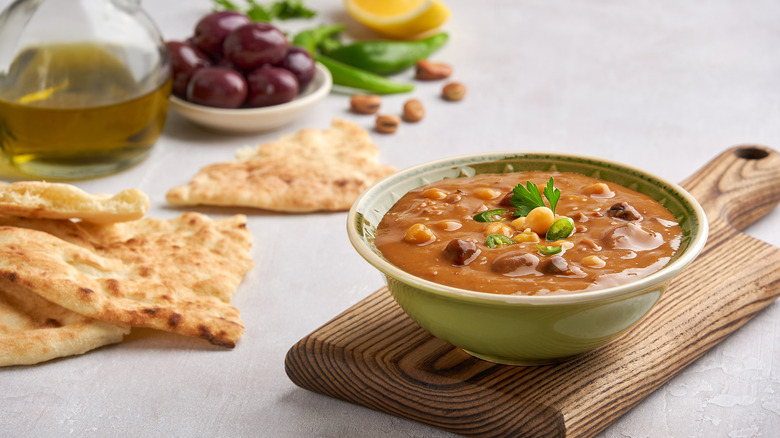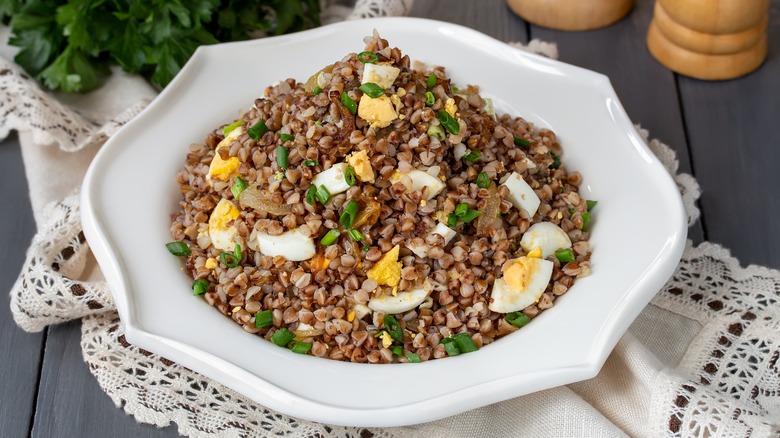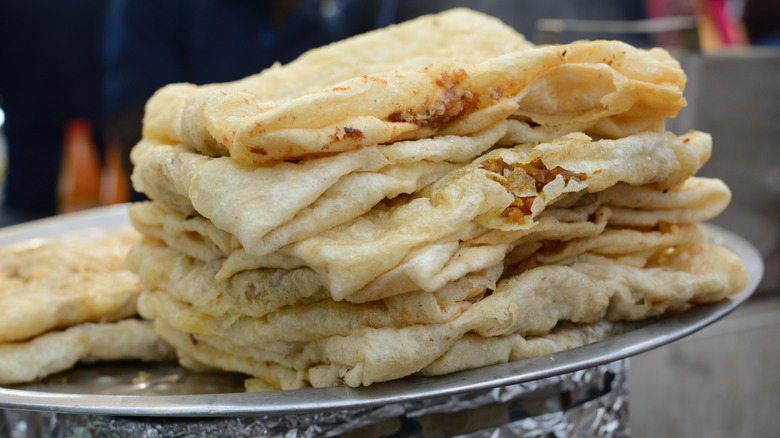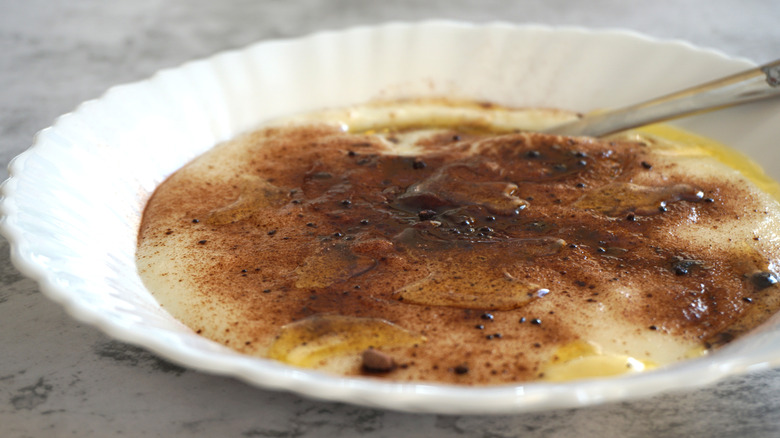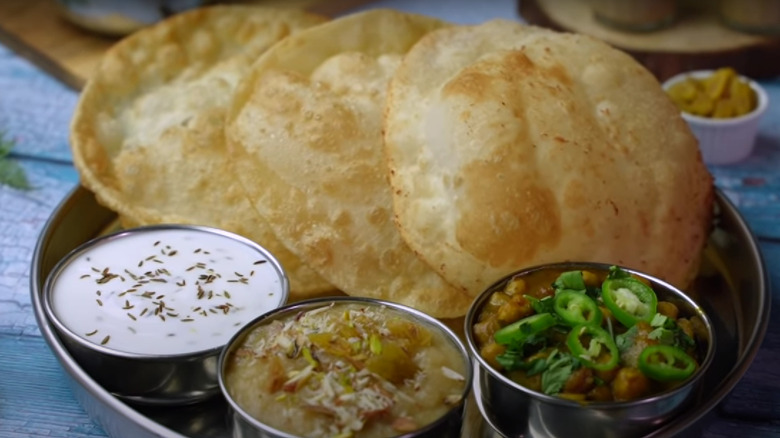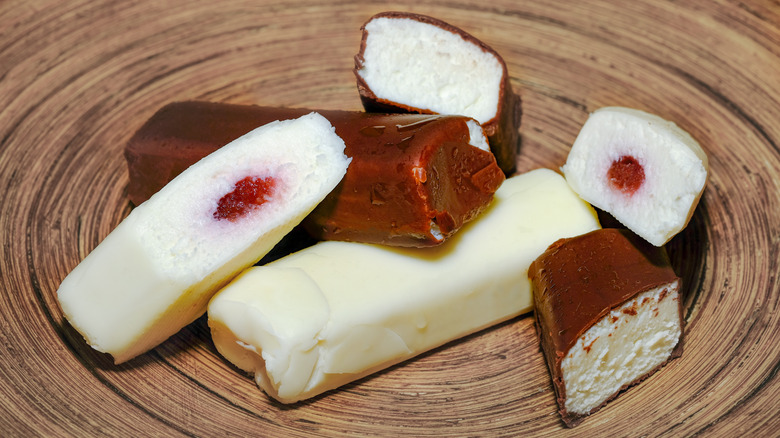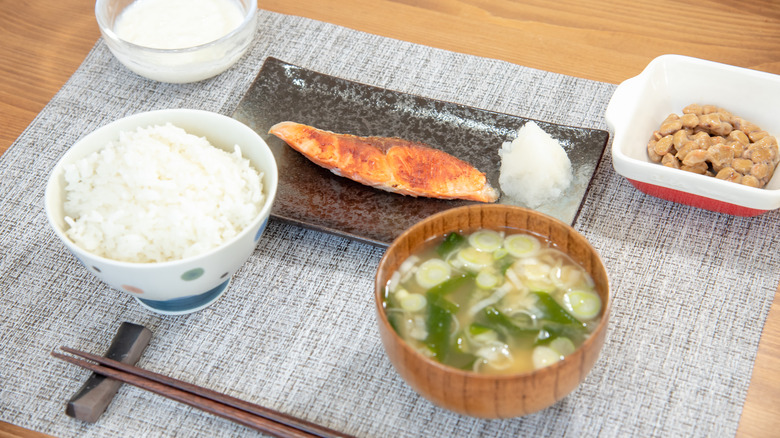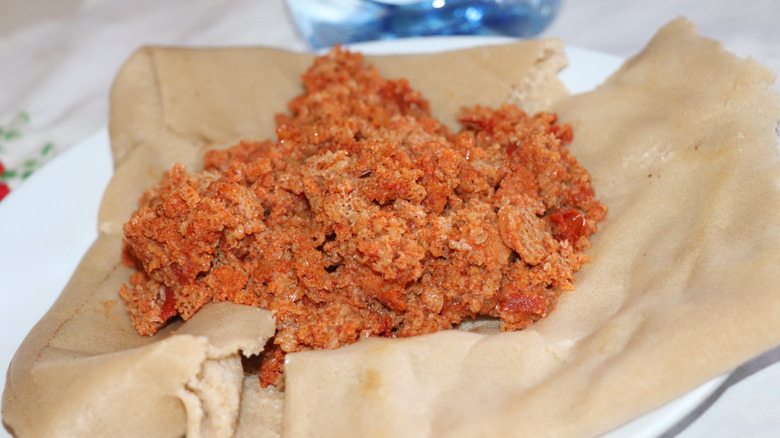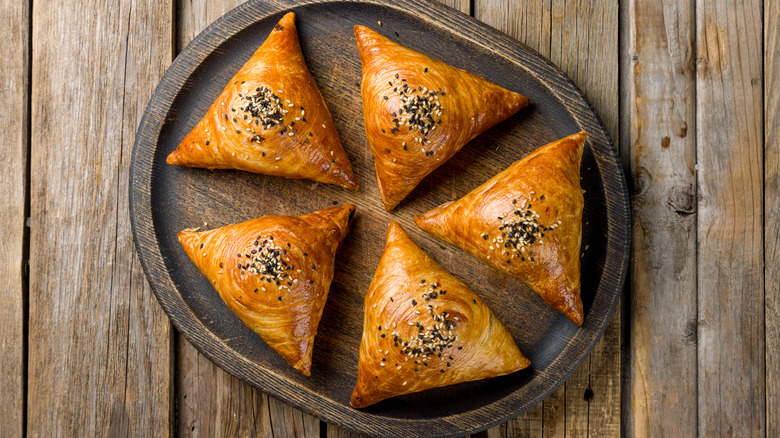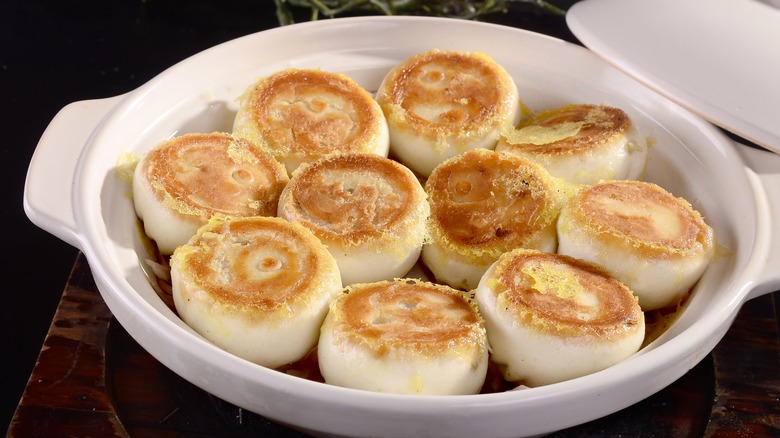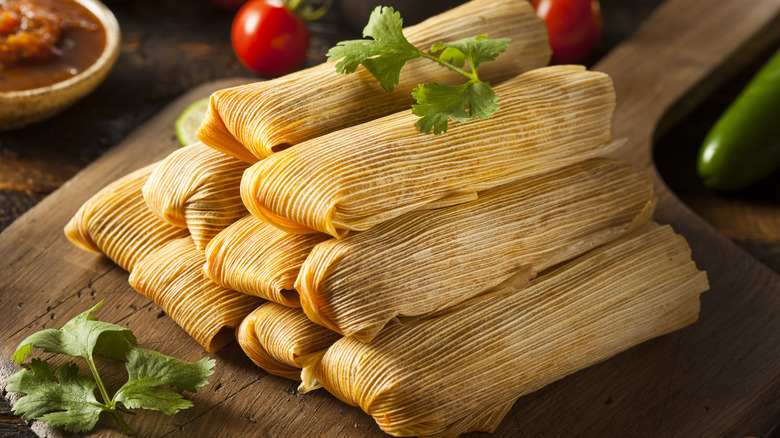What Breakfast Looks Like In 50 Countries
Breakfasts around the world come in all shapes and sizes, and are every bit as diverse as the people who eat them. Globally, the first meal of the day can range from light and uncomplicated to expansive and filling, and usually reflects the local culture and environment. Those in hotter places may prefer lighter breakfasts, while people from cooler parts of the planet often enjoy a full meal, both to warm themselves up and to give them plenty of energy before stepping out to face the cold. From country to country, breakfasts also run the full gamut from sweet to savory, and even some combinations thereof!
It's a popular English saying, that breakfast is the most important meal of the day, and many different cultures also echo the same sentiment. A satisfying morning meal helps ensure people have enough energy to keep going until the evening, helping with energy and focus. While it may seem that a heavy breakfast might be unhealthy, researchers have even found that a hearty breakfast can help to reduce calorie intake later on, while skipping breakfast can prevent your body clock from running on time. Here's what people across the planet are likely starting their day with today.
1. India: idlis
A specialty of Southern India but enjoyed all across South Asia more generally, idlis are small steamed cakes, often lightly seasoned with the cozy flavor of fenugreek seeds. They're made from a mixture of rice and lentil flour, meaning that they carry a healthy boost of vegetable protein without being too heavy.
The batter is lightly fermented, giving idlis a light, fluffy texture when freshly steamed. They're usually served with a couple of chutneys or a light vegetable stew called sambar, containing things like split peas, tomato, and okra.
2. Nepal: malpuwa
Traditionally, Nepal doesn't have the same meal structure as Western countries. Most people start their day with little more than a cup of tea, not eating anything until mid-morning. When they do, a Nepali brunch often includes malpuwa, a kind of fried bread.
Like a cross between pancakes and doughnuts, malpuwa are usually quite stodgy, with a crispy edge and a bubbly interior. In the high altitude of Nepal, calorie-rich fried foods are a popular way to start the day. Malpuwa are also eaten in Northern India, and are often enjoyed doused in sugar syrup.
3. Vietnam: pho
Perhaps Vietnam's most famous dish, pho is a wholesome noodle soup packed full of rich umami flavor. In the country itself, this is the most popular thing to eat for breakfast, and it's easy to find it on sale in the morning.
The deep, rich flavor of pho comes from a broth made from stewed bones, and noodles made with a specific type of fragrant rice called gao te. A variety of different types of pho include various meats and vegetables, often with the warmth of red chili and the sharpness of lemon.
4. Greece: spanakopita
Breakfasts in Greece often involve baked goods enjoyed with strong coffee. A popular breakfast on the go is koulouri, a ring of crusty bread studded with sesame seeds. For a more substantial breakfast though, savory pie is a common option, and the best-known Greek pie is spanakopita.
With its thin, flaky phyllo pastry, spanakopita is a firm favorite in Greece. Crispy on the outside, it's filled with feta cheese and minced spinach, and has a delightfully buttery taste. Full of energy without being too heavy.
5. Turkey: menemen
Menemen is a deliciously indulgent way to start the day. This hearty breakfast dish is named after a market town in Turkey, and can be quickly made at home in a single pan.
Quite similar to a North African breakfast dish, shakshuka, menemen is a scrambled egg dish with the rich flavors of olive oil, tomato, and onion. The eggs are best lightly cooked, so they're still soft and juicy. The whole thing is often flavored with oregano and chili flakes, for added aroma.
6. Mexico: chilaquiles rojos
Many Mexican dishes involve tortillas, and this traditional breakfast is no different. Chilaquiles are made with crisp tortilla chips, best prepared fresh by slicing and frying corn tortillas.
Chilaquiles are usually made with salsa, either verde or rojo. For chilaquiles rojos, this salsa is best made fresh with tomatoes, peppers, onion, and garlic. The dish is often served with chicken, refried beans, or a fried egg, and is topped with crumbled cheese.
7. UAE: balaleet
Variations of this breakfast dish are also enjoyed in other parts of the Middle East, like Kuwait, Bahrain, and Qatar. Balaleet is essentially a dish of sweet noodles and a thin omelet.
As well as being sweetened, the noodles are fragranced with things like rose water, saffron, and cardamom, which makes balaleet a very aromatic breakfast. While it may seem strange to Western palates, to combine this with a savory omelet, the flavors combine beautifully, making this one of the most popular breakfasts around the Persian Gulf.
8. Lithuania: varškėčiai
In Lithuania, these small pancakes are a favorite breakfast dish for children, though they're popular with people of all ages. Varškėčiai are known in other Slavic countries as sirniki, and they're made with cottage cheese or cheese curds.
Freshly cooked, varškėčiai have a wholesome aroma and a creamy flavor, and the curds make them a protein-rich way to start the day. The batter is sweetened with sugar, and they go very nicely with yogurt, sour cream, jam, or fresh berries.
9. Kenya: mandazi
Most Kenyans prefer to start the day with a simple meal of mkate and chai (a chunk of bread and a cup of sweet milk tea). For those who prefer a more indulgent breakfast though, a popular choice is a type of donut called mandazi, also eaten in neighboring countries like Somalia, Tanzania, and Uganda.
Often unsweetened, mandazi are made by deep frying dough, sometimes flavored with a hint of cardamom and lemon. The dough pieces are shaped into triangles and fried until they're golden, with a light and fluffy interior.
10. Libya: aseeda
The most popular breakfast in Libya is aseeda, a kind of simple pudding made from boiled flour. It's usually served either with honey and melted butter or date syrup and olive oil. Soft and doughy, it's traditionally eaten by hand with two fingers, though some people prefer to use a spoon.
Aseeda is especially popular during celebrations, and Libyans serve it to celebrate births and during festivals like Eid. A distinctly North African dish, versions of it are eaten across the Arab world.
11. Canada: maple syrup eggs
Maple syrup is a quintessentially Canadian ingredient, finding its way into all kinds of dishes, so it makes sense that it would be found on the breakfast table too. While many people enjoy a little on their pancakes, some Canadians like to use it for fried eggs.
Especially popular in Quebec, maple syrup is poured into the hot pan and left to simmer a little before the eggs are added. The result is a wonderfully aromatic mixture of sweet maple and savory eggs, which goes well with pancakes, bagels, or blueberries.
12. Philippines: tortang tahong
Omelet is a popular part of the cuisine of the Philippines, and is a common sight on breakfast tables there. A popular choice is tortang tahong, a seafood omelet that gives a filling and protein-rich start to the day.
Tortang tahong is light and fluffy, and packed with the umami taste of mussels with the light flavors of tomatoes and spring onions. Be careful not to get this confused with the similarly named tortang talong, which is made with eggplant.
13. Venezuela: arepas
Versatile and wholesome, arepas are Venezuela's most beloved bread. They're made with cornmeal and cooked on a hot griddle, usually in a circular shape. Arepas are served at all times of day as a side dish, but on the breakfast table, they take center stage.
For breakfast, arepas are often sliced and stuffed with a variety of different fillings, and an easy option is perico (scrambled egg with tomato and green onion). Other popular choices are reina pepiada (chicken and avocado), carne mechada (spiced beef), and dominó (white cheese and black bean).
14. Indonesia: bubur ayam
In Indonesia, a rice porridge called bubur ayam is a classic breakfast. Made with chicken broth, it's usually enjoyed with a variety of sides like fried peanuts, chopped shallots, sambal (a spicy chili sauce), and a kind of Chinese-style fried bread called cakwe, thinly sliced.
Bubur ayam is sold across Indonesia in the morning, often by street vendors, and it varies from one place to another depending on local ingredients. Even the type of rice used makes a difference.
15. Lichtenstein: ribel
A small country in Europe, Liechtenstein can be found in the Alps sandwiched between Austria and Switzerland. Ribel is one of the best-known dishes there, traditionally enjoyed by the working classes. It's made with cornmeal and butter, with a texture a bit like couscous.
Historically, ribel has always been a breakfast food, though it's been served for other meals too during more difficult times, thanks to being so cheap to prepare. It's traditionally served with tangy fruit, such as apple sauce, boiled cherries, or elderberry compote.
16. Tajikistan: kolbasa and kulcha
Mountainous Tajikistan is a Central Asian country that treats its bread with great respect. Bread is served for every Tajik meal, usually bought from a local bakery. At breakfast time, the bread of choice is kulcha, a kind of small naan.
For breakfast, kulcha is often served with kolbasa, a kind of sausage. Popular side dishes include smetana (sour cream), kaymak (clotted cream), and eggs.
17. Malaysia: nasi lemak
Malay food is usually fragrant and wholesome, with a variety of spices and sweet aromas, and a Malay breakfast is no different. Nasi lemak revolves around a serving of coconut rice made with the distinctive taste of pandan leaf.
Nasi lemak is usually served together with a handful of other things, including fried peanuts, crispy fried anchovies, fried chicken, sliced cucumber, and boiled eggs. The most essential part of the dish though, holding everything together, is a generous spoonful of sambal. This is a sweet and spicy chili sauce made with seafood and garlic.
18. Spain: tortilla de patatas
Not to be confused with Mexican flatbreads, the tortilla served in Spain is a type of omelet. It has a few variations, but the simplest is tortilla de patatas, made with sliced potatoes.
The trick to a good tortilla is to cook the potato slices first, so they're succulent and tender in the finished omelet. A hearty slice of this is a popular breakfast in Madrid and Northern Spain. It's often accompanied by black coffee, or sometimes a mid-morning beer.
19. Iran: adasi
Lentil soup is wholesome and easy to cook, with all kinds of regional twists and variations. Flavored with onion, cumin, and turmeric, adasi is the Persian version of this dish. It's a popular breakfast in Iran, particularly at the weekend.
Protein-rich and very nutritious, it's an excellent plant-based start to the day. Adasi may also be accompanied by Persian bread like barbari.
20. Nigeria: moin-moin and akamu
Moin-moin, is a spicy steamed cake made from ground black-eyed peas. It's a versatile little food that can be served as a side dish at any time of day. A similar dish is akara, which is deep-fried instead of steamed.
At breakfast time, moin-moin is paired with akamu, a kind of cornmeal custard. Sweet and creamy, the akamu perfectly complements the savory, spicy taste of the moin-moin, giving plenty of both energy and protein to start the day.
21. Colombia: calentado
The word calentado just means "heated," but in Colombia the word refers to a specific kind of breakfast. It originates from the Andes, in a region where beans and rice are an essential part of everyone's diet, usually served at dinner time. Calentado was first created to use up any leftovers from the night before and avoid wasting food.
In calentado, the beans and rice are usually served with things like Colombian chorizo, fried eggs, and arepas. An essential ingredient for this dish is hogao, a fragrant sauce made from tomatoes, scallions, and cumin.
22. Scotland: lorne sausage and tattie scones
Scottish food is very distinctive, and a traditional Scottish breakfast involves a hearty fry-up. A lighter option though, can involve just a couple of items from the full breakfast spread, and two Scottish favorites are Lorne sausage and tattie scones.
Lorne sausage, also called square sausage, is somewhere between sausage and meatloaf, sliced and fried. These sausage slices go perfectly with tattie scones, a kind of potato pancake cooked on a hot griddle. Buttery and wholesome, they're surprisingly filling.
23. Hawaii: spam, eggs, and rice
Since the 20th century, spam has become an extremely popular part of Hawaiian cuisine, and is a common addition to a Hawaiian breakfast. One of the most popular breakfasts in Hawaii combines it with fluffy steamed rice and scrambled eggs.
To cook a proper Hawaiian breakfast, the spam should be pan-fried, and seasoned with a little sugar and shoyu soy sauce. For flavor, the eggs are usually dusted with black pepper and the rice is topped with a little Japanese furikake seasoning.
24. Brazil: pão de queijo
The small, cheesy bread balls are one of the most popular breakfasts in Brazil. They can be eaten on their own, but many like them with sliced, cured meats. Some are even made with fillings, both savory, like spiced sausage, and sweet, like dulce de leche.
Pão de queijo is a light and chewy bread made with tapioca flour. It's traditionally made with a Brazillian cheese, Minas meia cura, but can just as easily be made with mozzarella or parmesan.
25. Kazakhstan: baursak
In the heart of Asia, Kazakhstan has a cuisine influenced by countries from all sides, combining into a distinctive style all of its own. A common choice for a Kazakh breakfast, a baursak is a type of donut, deep fried and shaped into balls, diamonds, or triangles.
Made from a mixture of flour, eggs, butter, and sugar, baursak are usually enjoyed with a little honey or jam. As part of a more hearty breakfast spread, they're usually accompanied by milk tea, sausage, and taba-nan, a local version of the naan flatbread eaten across much of Asia.
26. South Sudan: medeeda
A South Sudanese breakfast is usually a rich porridge made from finger millet. Known as medeeda, it's rich in carbohydrates with a good amount of protein and fiber, and many people there eat a bowl of it every morning.
Called wimbi in Swahili, finger millet is also known as red millet, and its color gives medeeda a pale purplish hue. To add both flavor and nutrition, it's usually combined with a few other ingredients, including yogurt, peanut butter, and lime juice.
27. Taiwan: dan bing
In many countries, breakfasts are sold as street food, and Taiwan is no exception. Available from street vendors and breakfast cafés alike, dan bing is a kind of pancake, and a favorite Taiwanese breakfast.
Dan bing are thin pancakes made from egg and flour, and the exact batter used varies from place to place. They're usually wrapped around things like ham or grated cheese and are often served with condiments like sweet soy sauce, chili sauce, or Japanese mayonnaise.
28. Honduras: baleadas
In Honduras, many people start the day with what are essentially breakfast tacos. Often made with flour tortillas, baleadas can be made with various fillings at different times of day. They are everywhere in Honduras, from home-cooked meals to street vendors to expensive restaurants.
Popular fillings for baleadas include avocado, crema fresca (a kind of sour cream), and queso fresco (white cheese). Popular fillings for the breakfast table include baleadas sencillas, made with refried beans, and baleadas especiales, which also include scrambled eggs.
29. Lebanon: manakeesh
In Lebanon, manakeesh is as synonymous with breakfast as bacon and eggs are in the anglophone world. A full breakfast there isn't complete without this crispy flatbread.
Sometimes called a "Lebanese pizza," manakeesh can be made with a variety of toppings. The most popular are white cheese, onion, and tomato, or a blend of herbs called za'atar (oregano, sumac, toasted sesame seeds, and good quality olive oil) which is spread on the bread before baking.
30. Ghana: hausa koko
Often sold as street food in Ghana, hausa koko is a kind of millet porridge. Often a breakfast food, it can also be enjoyed at any time of day, and is often served with bread, spicy bean cakes called koose, or a fried dumpling called pinkaso.
As well as millet, hausa koko is seasoned with ginger, cloves, and ground pepper. Made with milk and sugar, it has a sweet, creamy taste, and peanuts are a popular addition for extra flavor.
31. Algeria: sfenj
Sfenj are eaten across the Maghreb, and are popularly associated with Morocco, but these yeast donuts are a popular breakfast in Algeria. Made with yeast dough, they're deep-fried to give a crispy outside with a light, fluffy interior, and they go excellently with some freshly brewed mint tea.
Traditionally sold by street vendors in cities, sfenj can be just as easily made at home. The Algerian version is made with semolina, sweetened, and usually served with sugar or honey.
32. Mongolia: tarag
Mongolian food is traditionally very dairy-rich, and Mongolian breakfasts also include fried bread. Mongolian yogurt, eaten for breakfast, is known as tarag, though it's quite different from the widely eaten European-style yogurt.
Thick and unsweetened, sometimes made with yak milk, tarag is usually prepared at home in the same process Mongolians use to make urum (clotted cream). This is also served at breakfast time. Just as people in Western countries spread butter on their bread, Mongolians like theirs with urum.
33. Yemen: kubaneh
Kubaneh is a Jewish steamed bread widely enjoyed in Yemen. Traditionally, it's slowly cooked overnight at a low temperature, prepared on a Friday evening to be eaten for breakfast on Saturday morning.
This bread is designed for sharing, made to be easily pulled apart into small chunks. It can be served either sweet or savory, depending on personal preferences. Some families like to sprinkle theirs with sugar, while others enjoy kubaneh with a salsa-like tomato sauce.
34. Jamaica: cornmeal porridge
Corn is an essential part of cuisine in Jamaica, where a hearty cornmeal porridge is a favorite way to start the day. Rich and creamy, it's best made with fine cornmeal for a smooth texture, and coconut milk for a wholesome taste.
Spices are also essential in Jamaican food, and they're what give this porridge its distinctive flavor. A combination of allspice, cinnamon, and nutmeg, with a hint of vanilla, is essential in this delicious and warming breakfast.
35. Cambodia: num banh chok
Both a favorite breakfast dish and a piece of Cambodian cultural identity, num banh chok is a light curry dish made with rice noodles. Mild, and usually made with locally caught fish, English speakers sometimes know it by the name of Khmer noodles.
Like many Southeast Asian foods, num banh chok is made with a flavorsome combination of herbs and spices like fragrant lemongrass and galangal (a ginger-like root). Turmeric gives it a characteristic golden color.
36. Argentina: medialunas
With a name meaning "half-moons," medialunas are essentially Argentinian croissants. Buttery-tasting and made with egg-based pastry, the Argentinian version of these breakfast treats has a distinctive hint of lemon.
In Buenos Aires, medialunas are sold in virtually any bakery or coffee shop. Often enjoyed with a cup of coffee, they have a few variations including medialunas de manteca, made with butter, medialunas de grassa, made with oil, and medialunas rellenas, filled with chocolate, cream, or dulce de leche.
37. Morocco: khobz
The simplest and most common Moroccan breakfast is to just some fresh bread with olive oil, and a cup of tea. The bread of choice is khobz, a traditional kind and an essential item on any Moroccan breakfast table.
For a more indulgent breakfast, a popular option is a kind of flatbread called msemmen. A little like a pancake, these can be eaten either sweet or savory. At breakfast time, they're often enjoyed with a little butter and honey.
38. South Africa: mieliepap
South Africa is a diverse country, but this breakfast is enjoyed by everyone. Mieliepap is a simple dish made from maize meal. It can either be made into a creamy porridge or stirred until crumbly, with a texture a bit like couscous.
Mieliepap is versatile enough to be served in all kinds of ways. Some people enjoy it sweet, with butter and golden syrup, while others eat it with a tomato and onion sauce called smoor, wors (sausages), or a spicy vegetable dish called chakalaka.
39. USA: bagels and lox
The U.S.A. has a huge variety of breakfast foods, from the breakfast burritos of New Mexico to the reindeer sausages eaten in Alaska. One of the most iconic though, is bagels and lox — soft, lightly toasted bread with brined salmon, usually with cream cheese.
New York has always been a cultural melting pot, and this dish perfectly reflects that. None of the individual ingredients originally came from New York, but their combination is a distinctly American invention.
40. Egypt: ful medames
A dish with a long history, ful medames is a classically Egyptian breakfast dish. Often found on sale as street food, this is a slow-cooked stew of fava beans, flavored with olive oil, garlic, and spices.
Densely flavored, ful medames are made with cumin, the bright taste of fresh herbs, and a squeeze of lemon juice. It goes very nicely with warm pita bread or can be made into a more substantial meal with a few side dishes like hummus or roasted vegetables.
41. Russia: kasha
Buckwheat is one of Russia's most important dietary staples, where it's known as gretchka. It's eaten in all kinds of meals, and finds its way onto the breakfast table too, as kasha.
Often described as a kind of porridge, kasha is cooked as whole grains but is a lot drier than most porridge dishes. Usually boiled with either milk or water, most people simply eat it plain, perhaps with a little butter. For those who prefer something more flavorsome, it goes nicely with a spoonful of varenye, a kind of jam.
42. Bangladesh: mughlai paratha
Across South Asia, parathas are a popular breakfast pastry. Usually crisp and flaky, these pastries are stuffed with all kinds of fillings, and Mughlai paratha is a variation that's especially popular in Bangladesh.
Stuffed with a mixture of spiced eggs and keema, this Bengali dish originates in the days of the Mughal Dynasty. In modern times, it's very common in Bangladesh, where it's often sold as street food.
43. Czechia: krupicová kaše
Many breakfast foods are types of porridge, and Czechia's version is known as krupicová kaše. Regarded by many Czech people as a nostalgic comfort food, this is a sweet semolina porridge.
Krupicová kaše can be eaten at any time of day, but it's very often served for breakfast. Smooth and buttery, it's traditionally served with a topping, like cinnamon and apple slices, honey, or crumbled gingerbread biscuits.
44. Pakistan: halwa puri nashta
A traditional Pakistani breakfast revolves around halwa puri, a hearty combination of semolina pudding and flatbreads. The pudding is usually flavored with a little cardamom, the rich taste of ghee, and sometimes kewra. It's topped with chopped nuts.
For a traditional breakfast (nashta) spread, the flatbread is deep fried, and two other dishes join the semolina pudding — a thick chickpea curry and a lightly spiced potato curry. The dishes are small, giving a nice balance of both flavor and nutrition without being too filling.
45. Estonia: kohuke
Kohuke is an Estonian snack that's often served as breakfast for children. It's a small block of soft cheese, usually coated in chocolate. It can also come with a filling, like berries or coconut.
The cheese used is quark, a kind of cottage cheese widely eaten in Eastern Europe, especially in the Baltic countries. Made from milk curds, the quark makes kohuke a protein-rich breakfast, with the chocolate giving an energy boost.
46. Japan: teishoku
Teishoku is a kind of Japanese set menu with a collection of small dishes, often sold at traditional restaurants in Japan. A specific kind of teishoku is served first thing in the morning as a traditional Japanese breakfast.
The most important items on a Japanese breakfast table are miso soup and boiled rice, and many people are content with these alone. Other common dishes in a teishoku breakfast set include grilled fish, seasonal vegetables, pickles, and a fermented soybean dish called natto. Additionally, no Japanese breakfast is complete without a cup of green tea.
47. Ethiopia: firfir
Pancake-like injera bread is an essential part of Ethiopian cuisine, in much the same way that tortillas are ubiquitous in Mexico. And, firfir is a wholesome and traditional breakfast, that conveniently uses up leftover injera from the previous night's dinner,
Firfir is made with shredded injera, fried with a spice mix called berbere, together with onions, tomatoes, ginger, and garlic. Cooked properly, the injera will soak up all the moisture from the pan, making for a rich and flavorsome dish.
48. Uzbekistan: samsa
Uzbekistan has a rich and distinct collection of cuisine, with some influence from foods in other Asian countries. Samsa is a good example of this. These triangular pastries are similar to Indian samosas and Lebanese sambousek.
Samsa are filled with a mixture of spiced ground meat, and sometimes things like onion or pumpkin. Baked until golden brown and flaky, they're flavorsome and extremely moreish. Samsa are a classic Uzbek breakfast food, and are usually enjoyed with a cup of hot tea.
49. China: shengjian bao
Anyone familiar with Chinese food is probably familiar with bao — fluffy steamed buns, usually stuffed with something like char siu (sticky barbecued pork). But not all bao are steamed. The pan-fried version is called Shengjian bao, and it's traditionally served at breakfast time.
Shengjian bao are a local specialty of Shanghai, where they're usually stuffed with minced pork and seasonings. Fried in a hot pan, they're perfectly cooked when the base is golden and crispy while the rest of the bready exterior is still soft and tender.
50. Peru: tamales
Various kinds of tamal are eaten all over Latin America, and in Peru they're a traditional family breakfast served on Sundays. A truly customizable dish, there are local variations even within Peru itself.
Tamales are made with nixtamalized cornflour, kneaded together with fillings like chicken or pork, though other fillings can include cheese or peppers. The mixture is then wrapped in a panca leaf or corn husk and steamed. At the breakfast table, they're usually enjoyed with crusty bread and some salsa criolla, made with spicy peppers and tangy lime juice.
